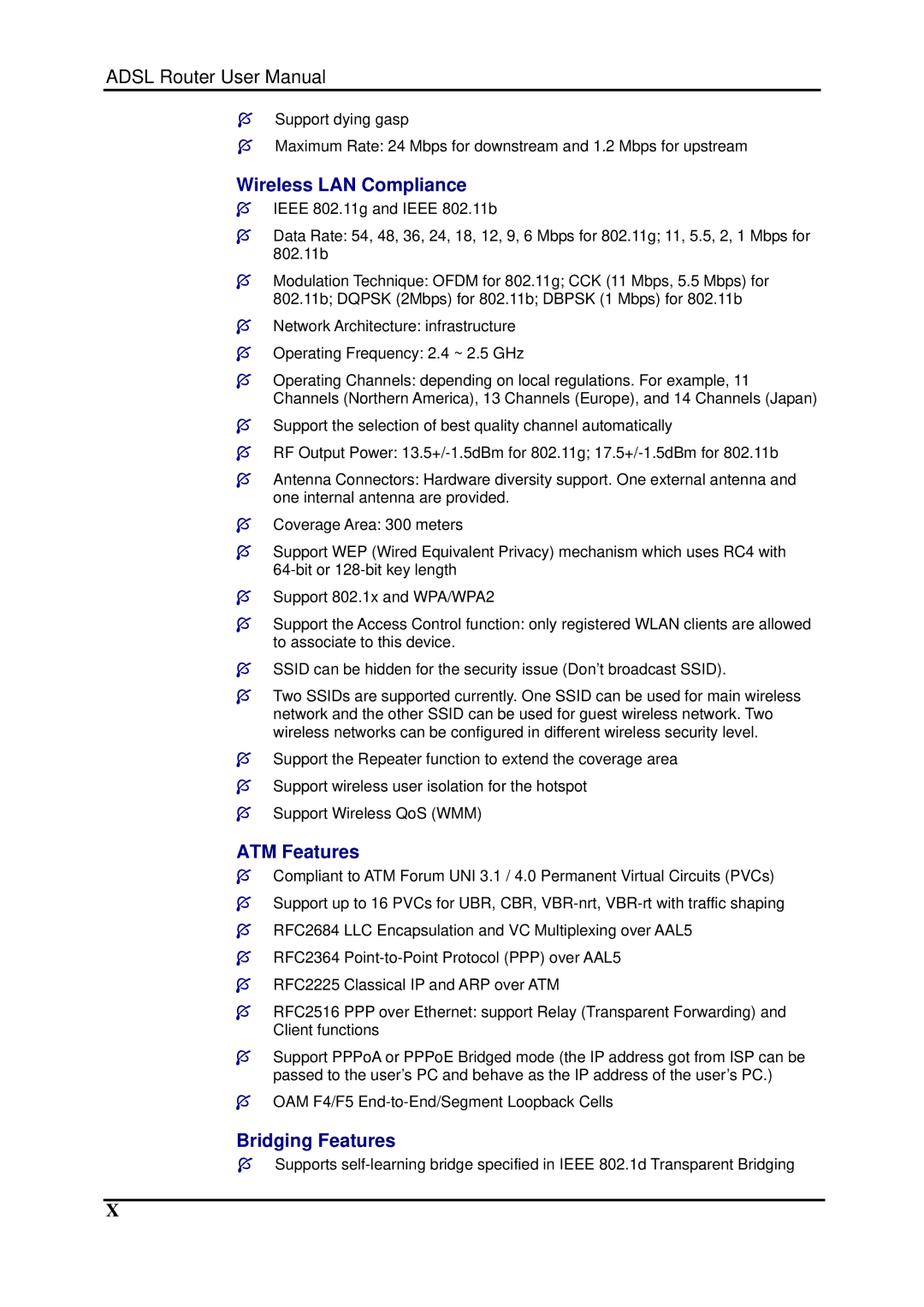
ADSL Router User Manual
Support dying gasp
Maximum Rate: 24 Mbps for downstream and 1.2 Mbps for upstream
Wireless LAN Compliance
IEEE 802.11g and IEEE 802.11b
Data Rate: 54, 48, 36, 24, 18, 12, 9, 6 Mbps for 802.11g; 11, 5.5, 2, 1 Mbps for 802.11b
Modulation Technique: OFDM for 802.11g; CCK (11 Mbps, 5.5 Mbps) for 802.11b; DQPSK (2Mbps) for 802.11b; DBPSK (1 Mbps) for 802.11b
Network Architecture: infrastructure
Operating Frequency: 2.4 ~ 2.5 GHz
Operating Channels: depending on local regulations. For example, 11 Channels (Northern America), 13 Channels (Europe), and 14 Channels (Japan)
Support the selection of best quality channel automatically
RF Output Power:
Antenna Connectors: Hardware diversity support. One external antenna and one internal antenna are provided.
Coverage Area: 300 meters
Support WEP (Wired Equivalent Privacy) mechanism which uses RC4 with
Support 802.1x and WPA/WPA2
Support the Access Control function: only registered WLAN clients are allowed to associate to this device.
SSID can be hidden for the security issue (Don’t broadcast SSID).
Two SSIDs are supported currently. One SSID can be used for main wireless network and the other SSID can be used for guest wireless network. Two wireless networks can be configured in different wireless security level.
Support the Repeater function to extend the coverage area Support wireless user isolation for the hotspot
Support Wireless QoS (WMM)
ATM Features
Compliant to ATM Forum UNI 3.1 / 4.0 Permanent Virtual Circuits (PVCs) Support up to 16 PVCs for UBR, CBR,
RFC2225 Classical IP and ARP over ATM
RFC2516 PPP over Ethernet: support Relay (Transparent Forwarding) and Client functions
Support PPPoA or PPPoE Bridged mode (the IP address got from ISP can be passed to the user’s PC and behave as the IP address of the user’s PC.)
OAM F4/F5
Bridging Features
Supports
X
